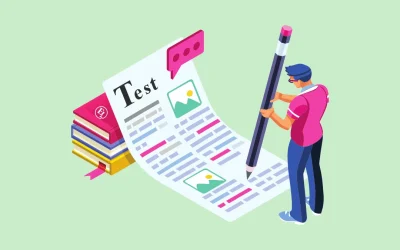You wrote the email. You built the list. You scheduled it to send at the perfect time. And still, the results were disappointing. The open rates were okay, but click-throughs were dismal, and conversions? Practically non-existent. If you’ve ever launched a campaign only to be met with silence, you’re not alone. The truth is, there’s often a deeper issue at play, and it’s not always what you think. Sometimes the missing piece is simply working with an experienced email marketing service agency that understands how to move the right people into action.
Why it’s not just about the subject line
Subject lines are important, but they’re not the root cause of disappointing email results. Even the most irresistible headline can’t rescue an email with poor audience segmentation, lackluster copy, mismatched offers, or unclear calls to action. If your content doesn’t resonate with what matters to your readers, no amount of creative subject writing will fix the problem.
Here’s where many companies go wrong: they approach email writing with the right intentions but lose sight of the strategy. Rather than mapping out their customer’s experience, they get caught up in promoting this month’s featured product or service. If recipients can’t quickly grasp the value for them personally, they’ll either scan through hastily or delete immediately.
Email marketing psychology boils down to one key insight: people need to feel understood and valued. Generic broadcasts designed to reach your entire database typically fail to engage anyone meaningfully. Your recent campaign may have underperformed because it came across as impersonal broadcasting rather than genuine conversation, and that human connection is what converts casual subscribers into loyal customers.
Relevance is the real driver of results
Good campaigns start with one thing: knowing who you’re talking to and not just having their name and email. You need to understand what they want, what’s bugging them, and how to talk to them so they listen.
That’s why segmentation is very important, and the biggest mistake is sending the same message to everyone on your list. Why? Because someone who just signed up for your newsletter needs different content than someone who’s been buying from you for years. Your repeat customers might be interested in your expensive stuff, but new people are still figuring out if they can trust you. So when you split people into groups based on what they do, where they live, what they’ve bought, and how much they pay attention to your emails, your messages hit way better.
Therefore, don’t just look at opens and clicks. Pay attention to how different groups react to different types of content, deals, and ways of saying things. That’s what will show you what makes each group take action.
Content that leads somewhere
Another big problem is emails that leave people hanging without telling them what to do next. Even if your message gets their attention, without a clear action step like booking a call, checking out a product, or signing up for something, it becomes another email they forget about in their crowded inbox.
That’s why good campaigns follow a simple formula: grab their attention first, give them something they can relate to or an offer they want, and finally tell them exactly what to do next. Don’t include five different CTA buttoms competing for attention. Give them one clear direction. Whether you want them to read more, buy something, or grab an offer, keeping it simple and clear always beats trying to be too creative.
So your email should create an easy path from the moment they open it to doing what you want them to do. Everything from your subject line to that final CTA button needs to work together to guide them toward that one goal.
Tech and timing matter too
The technical side of your email campaigns can make or break everything you’re trying to do. If your emails keep landing in spam or promotional folders, even your best content won’t reach your audience. Things like SPF, DKIM, and domain reputation sound complicated, but they’re the foundation that makes your email marketing work.
Timing is another big piece of the puzzle. Send too many emails, and people will start ignoring you. Don’t send enough and they’ll forget you exist. So you need to find that sweet spot by looking at your data to keep people engaged without annoying them.
That’s why you should consider what time zones your subscribers are in, when they’re usually working, and when they’ve opened your emails. The best time to send varies for every industry and audience, so don’t just follow what everyone else is doing. Use your data and craft your strategy based on that.
Testing isn’t optional, it’s essential
Email marketing’s greatest strength is its measurability, yet many businesses skip testing altogether. A/B testing subject lines, button designs, email length, images, and send times can reveal insights that transform your results. Even subtle changes, like adjusting CTA wording or restructuring content, can significantly boost conversion rates.
Effective testing requires focusing on one element at a time. When you discover something that works, continue refining it. Customer preferences change, markets shift, and last month’s winning strategy might not work next time. Successful brands maintain consistent testing and optimization practices.
Document your testing process and results carefully. This creates a valuable knowledge base that informs future campaigns and helps prevent repeating unsuccessful approaches.
Focus on value, not just visibility
Email marketing success comes down to one thing: actually helping your audience instead of just trying to get their attention. When your emails solve problems, give useful info, or offer real rewards, people will keep engaging with them. They’ll open, click, and buy when your offer matches their need.
So if your last campaign didn’t work out, don’t write off email marketing completely. Instead, look at each piece, how you manage your list, how you segment people, what your messages say, and whether your technical stuff is set up correctly. When all these parts work together, email becomes one of your strongest business tools.
And remember that building a good email program doesn’t happen overnight. Focus on figuring out what your audience cares about, and use that knowledge to guide everything you do with your campaigns.





